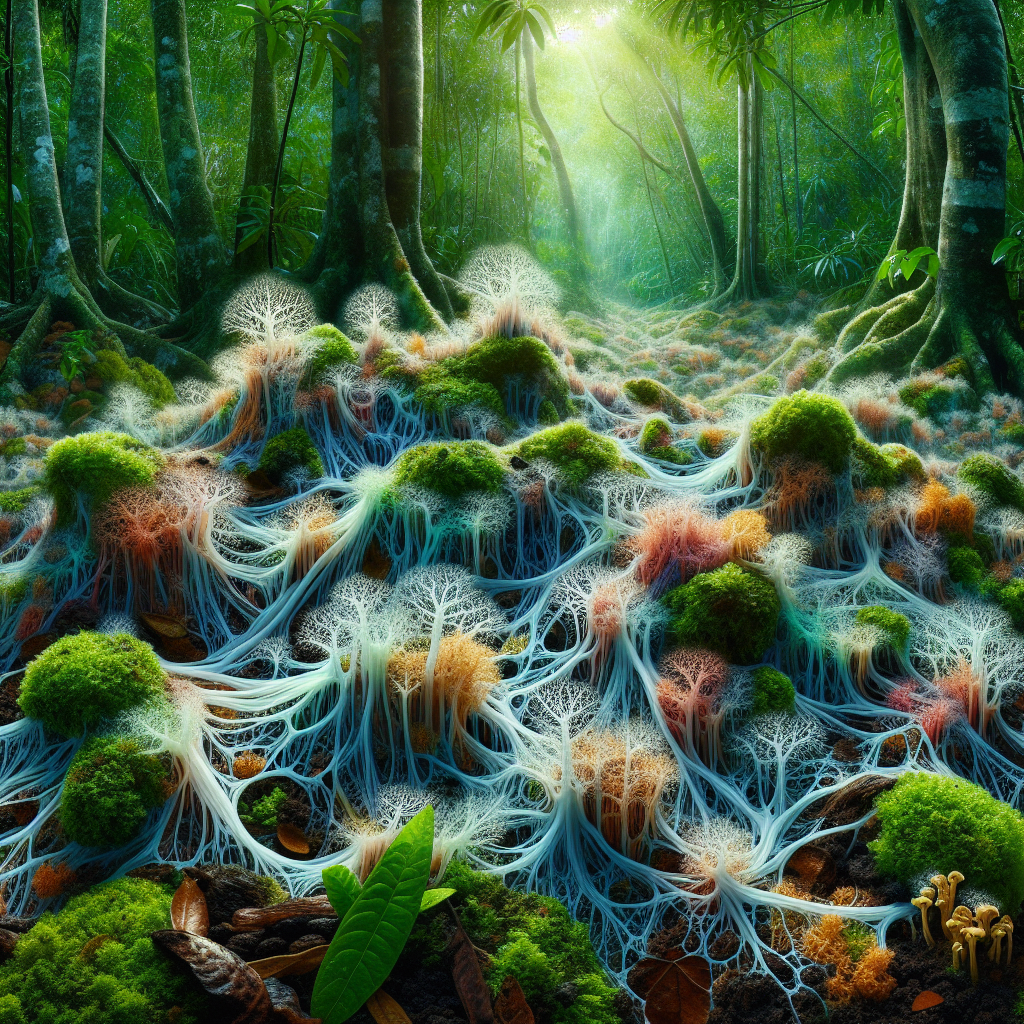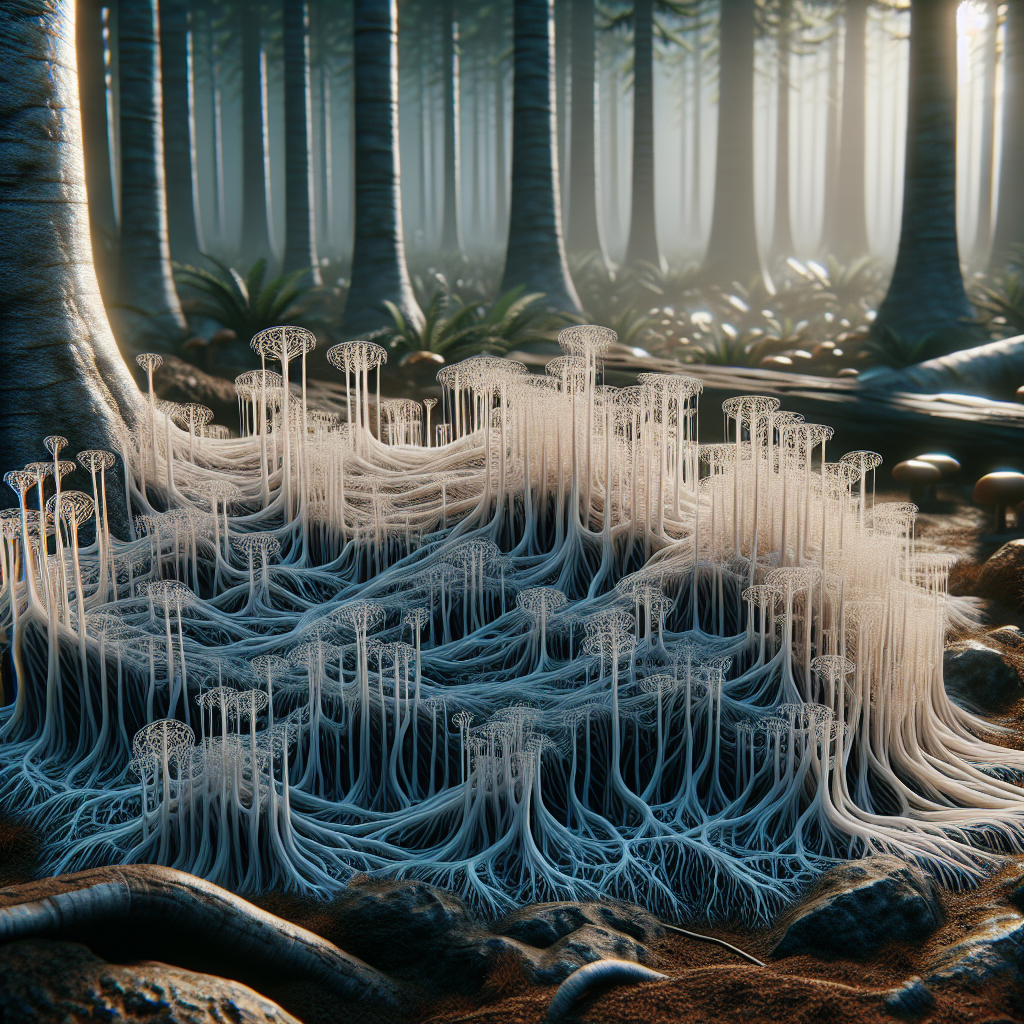In the realm of biology, certain concepts stand as pivotal milestones in our understanding of earth’s complex ecosystems. One of these fundamental concepts is the mycelium, an intricate, unseen universe thriving beneath our feet. The article, “Understand the Mycelium Definition: A Comprehensive Guide,” offers you an insightful exploration into the depths of this subterranean world. It efficiently elaborates on its structural intricacies, roles in nature, significant contributions to scientific study and environmental sustainability, making this guide an indispensable resource for broadening your knowledge of this underlying fungal network.

Basics of Mycelium
Definition of Mycelium
Mycelium represents the thread-like vegetative part of the fungi, a network of tiny filaments called hyphae. It’s a structure that’s integral for the growth and survival of the fungi, playing a significant role in nutrient uptake, reproduction, to the overall lifecycle of the organism. Although normally hidden from sight below the soil, mycelium plays an essential part in the ecosystem by breaking down organic materials and recycling nutrients back into the soil.
Origins of the term Mycelium
The term “mycelium” originates from the Greek word “mykēs”, meaning fungus, and “hēlion”, meaning the little sun. This is an apt name given its fundamental role in the propagation and survival of fungi, much like how the sun is essential for life on Earth. Over the years, mycelium has been the subject of much scientific study, leading to a greater understanding of its functionalities and potential applications.
Common misconceptions about Mycelium
There are a few common misconceptions regarding mycelium, largely due to its complex nature and often invisible presence. One common misconception is that mycelium and mold are the same – while it’s true that some types of fungi can cause mold, not all mycelium is responsible for this. Another misconception is that all fungi produce mushrooms. In reality, mushrooms are sporadic structures developed by certain fungi during their reproductive phase, and many fungal species do not produce them at all.
Anatomy of Mycelium
Hyphae: The Building Blocks
Hyphae are the building blocks of the mycelium, comprising thin cylindrical tubes that extend, branch, and interlink to form a complex web. The cells within hyphae contain cytoplasm, cell walls made of chitin, and can sometimes house multiple nuclei, depending on the type of fungi.
Hyphal Network
The hyphal network is a vital structure governing nutrient absorption, growth, and reproduction of fungi. It acts as a conduit for transporting nutrients and can span large areas, connecting different components of the ecosystem and supporting nutrient cycling.
Physical and Chemical Components
Mycelium consists of various physical and chemical components that contribute to its overall functions. Physically, the mycelium forms a complex network that extends both vertically and horizontally into the soil. Chemically, it’s responsible for producing enzymes that assist in decomposing organic matter and absorb nutrients.
Function and Role of Mycelium in an Ecosystem
Mycelium as Decomposers
One of the primary ecological roles of mycelium is as decomposers. Through their network of hyphae, they break down dead organic matter into simpler molecules, unlocking energy and freeing up nutrients that are then returned to the soil to be used by other organisms.
Nutrient Cycling and Soil Fertility
Mycelium plays a critical role in the cycling of nutrients in the ecosystem, helping maintain soil fertility. They convert dead organic matter into forms that plants and other organisms can use, thus promoting healthy plant growth and contributing to global carbon cycling.
Mycorrhizal Relationships
Many mycelium form mutually beneficial relationships with plant roots, a process known as mycorrhizal symbiosis. The mycelium enables the plant to absorb essential nutrients efficiently, while the plant provides the mycelium with organic carbon, contests that form a cycling relationship that benefits both parties.
Types of Mycelium
Septate Mycelium
In a septate mycelium, the hyphae are divided into cells by cross-walls known as septa. Each cell typically contains one or two nuclei, and small pores allow for the movement of materials between cells.
Coenocytic Mycelium
Coenocytic mycelium, or non-septate, is characterized by hyphae that are not partitioned by septa. Instead, these hyphae are multi-nucleated and cytoplasm-filled meaning that nuclei are free to move within the cell.
Hyphal Swelling
Hyphal swelling is a unique type of mycelium that experiences an irregular growth of the hyphae referred to as swelling. These swellings are responsible for storing nutrients that can be mobilized during periods of nutrient shortage.
Spore-producing Structures
Certain types of mycelium differentiate and develop into spore-producing structures during the reproductive cycle of the fungus. These include the familiar mushroom structures, which spread the fungi’s spores to propagate and colonize new territories.

Growths Forms of Mycelium
Aerial Mycelium
Aerial mycelium refers to the growth form of mycelium in which the hyphae grow above the surface of the substrate, interacting with the air and the environment. This type often develops reproductive spores for the purpose of dispersion.
Substrate Mycelium
Substrate mycelium consists of hyphae that penetrate and spread within the material on which they grow, often soil or rotting matter. This type of mycelium is primarily responsible for nutrient absorption and organic matter decomposition.
Cord Mycelium
Cord mycelium is a specialized type of mycelium that forms thick, rope-like bundles of hyphae, typically under the soil surface. These cords connect different parts of the fungal network and participate in long-distance transport of water and nutrients.
Mycelium and Fungi: Understanding the Connection
Fungal Reproduction
Mycelium play a key role in the reproduction of fungi by producing spores, which are carried away by the wind or water to colonize new environments. Some fungi also have the capacity for asexual reproduction, in which mycelium simply expands its network into new territories.
Lifecycle of Fungi
The lifecycle of fungi is closely tied with mycelium. After the initial germination phase, fungi devote most of their lifecycle to the growth and expansion of the mycelium network. Later, under suitable conditions, the mycelium may develop reproductive structures such as mushrooms, puffballs, or more, whereafter the lifecycle begins anew.
Comparison with Other Fungal Structures
While mycelium forms the vegetative structure of fungi, it’s often compared to other fungal structures like spores and mushrooms. However, each of these structures serves a unique role – mushrooms for reproduction, spores for propagation, and mycelium for nutrient uptake and growth.
Mycelium in Medicine and Pharmacology
Antibiotics Production
Mycelium has been employed in the production of antibiotics for many years. The most famous example is penicillin, sourced from Penicillium fungi. These fungi produce antibiotics to inhibit other organisms, an attribute harnessed in the development of life-saving drugs.
Immunosuppressive Drugs
Several essential immunosuppressive drugs derive from fungi; for instance, Cyclosporine, which is used to prevent organ transplant rejection, stems from a type of fungi. The production of such drugs usually implicates mycelium in their natural or bioengineered forms.
Potential in Cancer Treatment
Research has indicated possible applications of mycelium in cancer treatment. Some species of fungi are known to produce compounds that inhibit cancer cell growth, presenting a promising avenue for developing new anti-cancer drugs.
Mycelium in the Food Industry
Use in Cheese Making
Mycelium features in the food industry, including in cheese making, particularly blue cheese. Penicillium roqueforti, for example, is a fungus that produces blue-green spores and gives the characteristic flavor and appearance to this type of cheese.
Brewing and Fermentation
Mycelium is used in the brewing and fermentation process, contributing to the production of beer, wine, and spirits. Additionally, various types of fungi, typically yeasts, play a crucial role in fermentation, converting sugars into alcohol.
Mushroom Production
Mushroom production involves the growth and development of mycelium. In controlled settings, mycelium is nurtured on a nutrient-rich substrate until it develops into the fruit bodies that we recognize as edible mushrooms.
Mycelium in Environment and Sustainability
Mycelium in Bioremediation
Mycelium has been recognized for its potential in bioremediation—the use of biological agents to remove or neutralize pollutants. Thanks to the mycelium’s potent decomposition capabilities, fungi have been successfully used to break down pollutants in contaminated soils.
Mycelium as a Sustainable Material
Mycelium is being exploited as an innovative, sustainable material. Companies are using mycelium to produce alternatives to leather, packing materials, building materials, and even dietary protein sources, presenting endless possibilities for environmentally friendly products.
Role in Carbon Sequestration
Mycelium contributes to carbon sequestration in the environment by incorporating carbon into their structures as they grow, holding their form for hundreds to thousands of years. The use of mycelium in carbon capture initiatives offers a promising avenue in efforts to combat climate change.
Future Research and Applications of Mycelium
Emerging Medical Applications
Current research is turning towards the potential for further medical applications of mycelium, including the development of novel antibiotics and anticancer drugs. Already recognized for its immunomodulatory properties, mycelium could be utilized to treat chronic inflammatory diseases and allergies.
Innovations in Biotechnology
Mycelium continues to inspire new innovations in biotechnology. Areas of active investigation include the pharmaceutical industry, biofuel production, food and beverages, chemical industries, and more. The ability to genetically engineer mycelium is opening up new possibilities for customizing this versatile resource for specific applications.
Potential Impact on Climate Change
Given its role in carbon sequestration, mycelium is likely to have a substantial effect in upcoming efforts to mitigate climate change. Harnessing the potential of mycelium could be key in developing technologies and practices for carbon capture, contributing to a sustainable future.
Overall, mycelium has untapped potential, functioning as a unique, natural resource that can be harnessed for environmental, economic, and medical applications. Its diverse capabilities, from nutrient cycling in the soil to the source of life-saving antibiotics, underscore the value of this often overlooked component of our natural environment. The future of mycelium research is promising, with the prospect of revealing unknown applications that can contribute to global sustainability and health.
